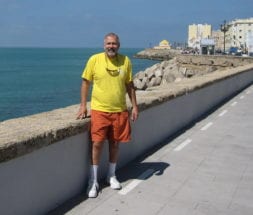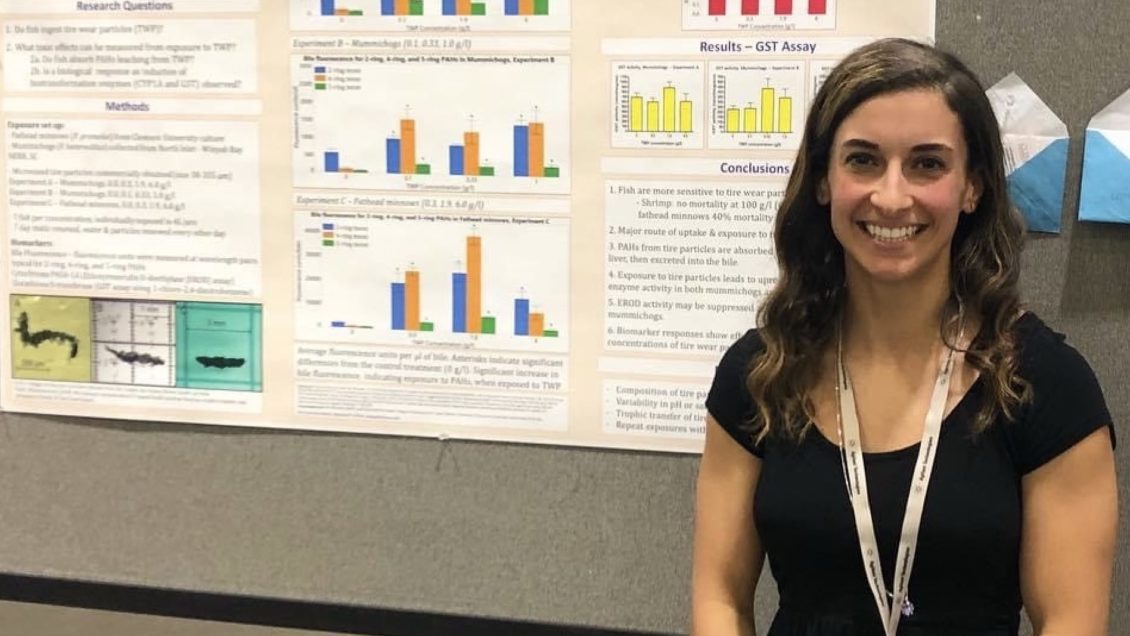Stephanie LaPlaca, a graduate student in Clemson University’s College of Science, is the first recipient of the Department of Biological Science’s Dr. Stephen Klaine Annual Memorial Fellowship.
“Receiving the Klaine fellowship is a huge honor. Although I didn’t get the chance to meet Dr. Klaine, I’ve heard so many wonderful things about him through other students and faculty at Clemson. His legacy is inspiring,” said LaPlaca, a fourth-year Ph.D. student in Biological Sciences’ environmental toxicology graduate program. The department also has graduate programs in biological sciences and microbiology.
Klaine (1952-2016) was a professor in the Department of Biological Sciences and a member of the environmental toxicology graduate program for 24 years. He was an internationally recognized environmental toxicologist with a legacy of devotion to teaching and mentoring.
“Steve was really the heart of the environmental toxicology program at Clemson for so many years,” said Cindy Lee, chair of Clemson’s Engineering and Science Education, who worked with Klaine and played an instrumental role in starting the fellowship. “He had an outsized impact on our field and in society.”

During his career, Klaine contributed to the development of 40 doctoral students and 45 master’s degree students.
“He was a professor for students first. Steve was interested in students and the development of his students into both researchers and thinkers. He thought research should answer a problem,” said William Baldwin, graduate program coordinator for biological sciences and a member of the committee that selected the fellowship recipient.
LaPlaca’s research focuses on the toxicity of crumb rubber particles to aquatic organisms.
As tires wear, they leave tiny particles of rubber on the roadways. When it rains, those particles wash into creeks, streams and lakes. Environmental samples of water and sediment often contain crumb rubber particles.
“Microplastic and plastic pollution is all over the media, but the abundance of crumb rubber particles in microplastic samples from sediment and water is a relatively new finding,” said LaPlaca, who hails from Fairfax, Virginia. “Crumb rubber particles in the environment are unlikely to go away soon, as they do not easily degrade. Unless there are advances in environmental engineering for stormwater treatment and/or composition of tires, they will remain prevalent in the environment.”
Understanding how crumb rubber affects aquatic organisms can inform stormwater regulators on how to best manage road runoff, help consumers make more eco-friendly choices to reduce their impact, and allow scientists to understand their effects on wildlife and ecosystems, she said.
Graduate students in the environmental toxicology program were eligible for the fellowship. Baldwin said the selection committee considered excellence in research and publication history first and foremost. The committee also considered outreach, teaching, presentations and awards.
LaPlaca and Peter van den Hurk, her academic advisor, published a paper in the journal Ecotoxicology last April titled “Toxicological effects of tire crumb runoff on mummichogs and fathead minnows.”
“It’s quite impressive for a student to have a publication out of doctoral research in their third year. Most of the time, you don’t see it until later in the program or after students graduate with a Ph.D. She’s also presented the results at national and international scientific meetings,” said van den Hurk, who is the coordinator of the environmental toxicology program.
LaPlaca also led a creative inquiry project called “What’s in Our Waters?,” which focuses on outreach and training high school students to analyze water quality.
“She fits who Steve was,” he said. “Steve was very science-oriented, but he was also oriented toward translating science to applications in the real world. As environmental scientists, we help society address environmental problems. Steve advocated that. I think Stephanie fits that picture very well.”
Throughout the College of Science, there are many funds that support graduate education and the future of these scholars and researchers in industry, academia and beyond. LaPlaca is one of numerous students who benefit from the legacies and generosity of faculty, alumni and donors at Clemson.
Get in touch and we will connect you with the author or another expert.
Or email us at news@clemson.edu

